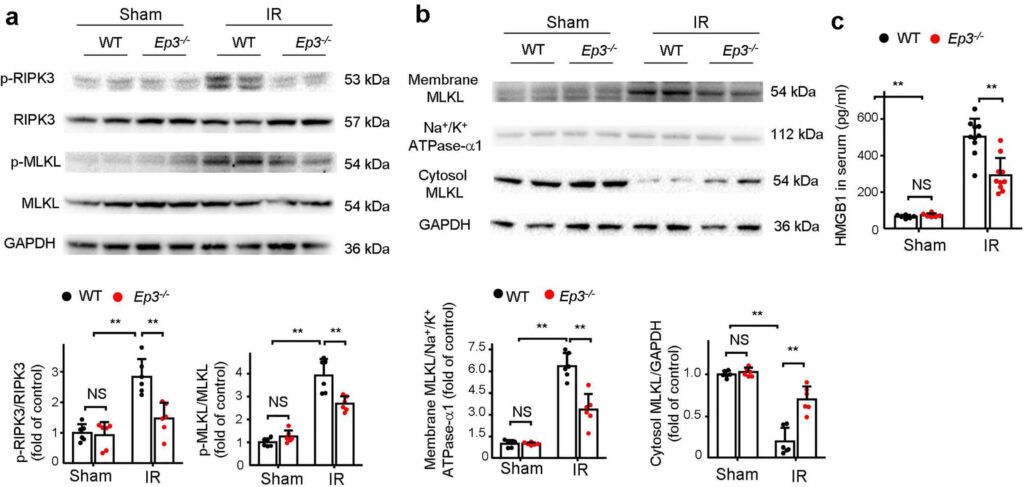FineTest Elisa kit contributes to the research on acute kidney injury treatment. The immunoassay is designed to measure HMGB1 concentration in serum.
Publication Details
Article Title: E-prostanoid 3 receptor deficiency on myeloid cells protects against ischemic acute kidney injury via breaking the auto-amplification loop of necroinflammation
Journal Title: Kidney International
DOI: 10.1016/j.kint.2022.08.019
IF: 18.998
PMID: 36087809
Abstract: Necroinflammation plays an important role in disease settings such as acute kidney injury (AKI). We and others have elucidated that prostaglandins, which are critically involved in inflammation, may activate E-prostanoid 3 receptor (EP3) at low concentrations. However, how EP3 blockade interacts with regulated cell death and affects AKI remains unknown. In this study, AKI was induced by ischemia-reperfusion (30 minutes/24 hours) in Ep3 knockout (Ep3-/-), bone marrow chimeric, myeloid conditional EP3 knockout and corresponding control mice. The production of prostaglandins E2 and I2 was markedly increased after ischemia-reperfusion, and either abrogation or antagonism of EP3 ameliorated the injury. EP3 deficiency curbed inflammatory cytokine release, neutrophil infiltration and serum high-mobility group box 1 levels, but additional TLR4 inhibition with TAK-242 did not offer further protection against the injury and inflammation. The protection of Ep3-/- was predominantly mediated by suppressing Mixed Lineage Kinase domain-Like-dependent necroptosis, resulting from the inhibition of cytokine generation and the switching of cell death modality from necroptosis to apoptosis through caspase-8 up-regulation, in part due to the restraint of IL-6/JAK2/STAT3 signaling. EP3 deficiency failed to further alleviate the injury when necroptosis was inhibited. Ep3-/- in bone marrow-derived cells, particularly that in myeloid cells, protected kidneys to the same extent as that of global EP3 deletion. Thus, our results demonstrate that EP3 deficiency especially that on myeloid cells, ameliorates ischemic AKI via curbing inflammation and breaking the auto-amplification loop of necroinflammation. Hence, EP3 may be a promising target for the prevention and/or treatment of AKI.
Keywords: prostaglandin, acute kidney injury, inflammation, regulated necrosis, caspase-8
Immunoassay
| FineTest Product | Sample | Detection Target | Species |
| Mouse Hmgb1(High mobility group protein B1) ELISA Kit(EM0382) | serum | HMGB1 | Mouse |
Validated Image

Figure Source: Kidney Int. 2022 Sep 7;S0085-2538(22)00695-0. doi: 10.1016/j.kint.2022.08.019.
Figure 4. EP3 deficiency attenuates necroptosis and DAMP release. (a) Western blot analysis of p-RIPK3, RIPK3, p-MLKL, and MLKL in kidneys of WT and Ep3-/- mice with GAPDH as the loading control. Levels of p-RIPK3 and p-MLKL relative to those of total RIPK3 and MLKL, respectively, were quantified by densitometry. n = 6 mice per group. (b) Western blot analysis of MLKL in the membrane and cytosolic fractions of kidneys. MLKL relative to GAPDH in the cytosolic fractions and MLKL relative Na+/K+ ATPase-α1 in the membrane fractions were quantified by densitometry. n = 6 mice per group. (c) Levels of serum HMGB1 measured by ELISA. n = 6-10 mice per group. Values are provided as mean ± SD and analyzed with two-way ANOVA. **P < 0.01.
